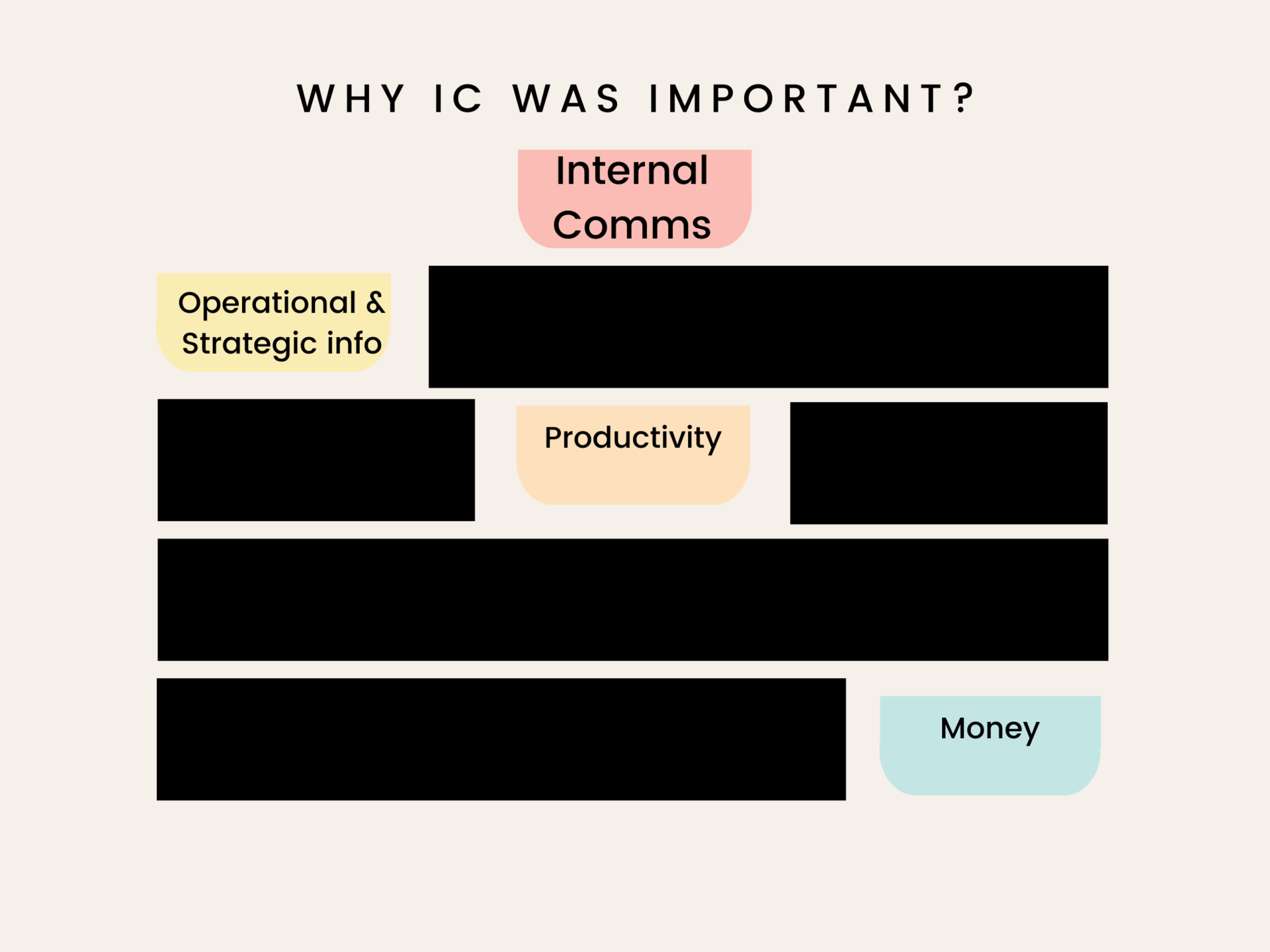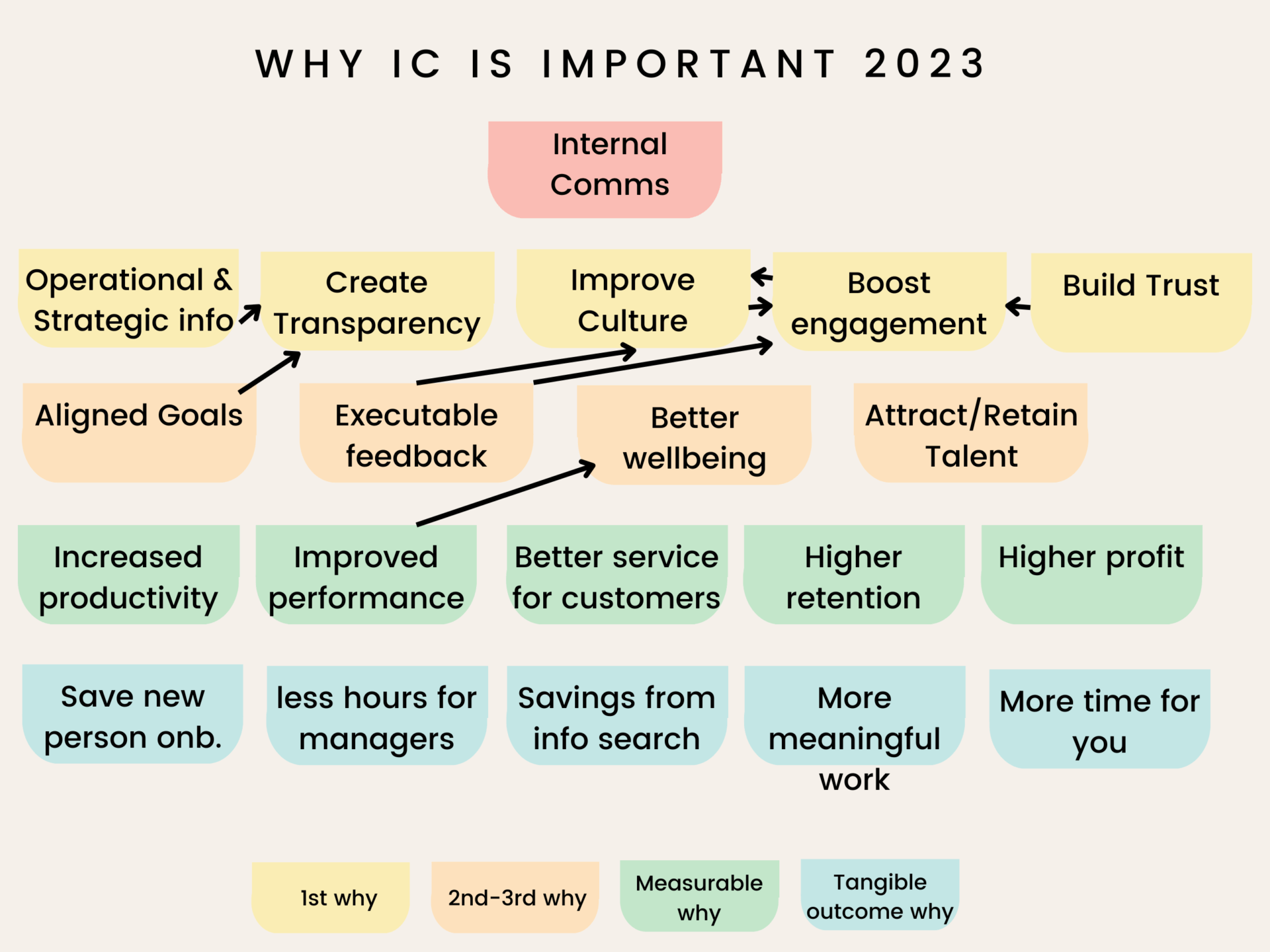It used to be simple. Organisations primarily employed a top-down approach to internal communication (IC) to convey essential operational and, occasionally, strategic information to employees. The objective was to enhance productivity, which, in turn, would lead to a healthier bottom line.

The growth of intranets and, particularly, the widespread adoption of mobile devices with rich media formats transformed internal communication. This ushered in a golden age of information sharing, but it also introduced challenges like information overload, noise, channel problems, and difficulties in adopting technology, particularly among older and frontline workers.
The emergence of concepts like organisational culture, employee experience, employee well-being, and employer branding has challenged the traditional, single-minded role of internal communication. Today, IC serves a multitude of initiatives, making it more challenging to provide a clear-cut answer regarding why organisations prioritise it and why it’s vital.
The Experiment
To better understand why organisations are doing IC, we conducted a non-real-time chat-based roleplay experiment. The people of GuavaHR took the role of “Mr. Grumpy – a “why”-bomber CEO” to ask the respondents (HR/Comms people) a series of “why” questions, starting with “Why do we need IC in our company?” and adapting the next “why” question based on the respondent’s answer. Mr. Grumpy had the patience for a maximum of 6 questions, so we tried to reach more measurable evidence of the real benefits of Internal Communication.
Sidenote – An Alarming Drop Rate
Unexpectedly, we observed a high dropout rate among respondents during the role play. While some may have found the exercise different from their expectations, it was alarming to lose a quarter of the participants between the second and last questions.

Some individuals just gave up. Either they gave up emotionally and said they didn’t want to answer these questions anymore, or said they honestly didn’t know what to answer.
Mr. Grumpy’s character was straightforward and not very supportive, trying to emulate a hard environment (due to the lack of understanding on managerial or C-level) of HR innovation, so for us, the key takeaway was that HRs should be more prepared and ready to answer hard questions why “innovative” HR initiatives are needed in organisations.
The Results
The responses to the initial “why” question were diverse, but the most frequent answers emphasised enhancing engagement and improving organisational culture as reasons for the importance of IC. Information sharing, goal alignment, transparency, and trust were also commonly mentioned.

Despite our attempts to steer toward more tangible outcomes with subsequent “why” questions, responses often revolved around popular concepts such as employee well-being and talent attraction.
Furthermore, there was no consensus on the interdependence of these concepts. Does higher engagement foster an improved culture, or is it the other way around? Does building trust enhance engagement and culture, or does a better culture lead to greater trust?
After 2–3 rounds we tried to get more measurable outcomes. According to respondents, effective IC mainly results in financial benefits such as increased profit, productivity, and performance, especially when outcomes require concrete measurement. Respondents also mentioned improved customer satisfaction and employee retention as reasons for IC’s importance in their organisations.
What We Can Learn From the Answers
The role of IC has evolved and varies among organisations. While all organisations engage in IC, the motivations extend beyond merely sharing operational and strategic information. The range of topics has expanded considerably.
What about the “customers” expectations? It’s essential to understand why this shift has occurred and what has driven it. Demand in the market (from the employees) explains it well – if there’s a demand, companies adapt, making this a logical progression..
Intra-company consensus is essential for HR buzzwords. The interpretation of Internal Communication, like concepts such as employee engagement and organisational culture, differs from one organisation or person to another. This isn’t necessarily a problem, but it requires caution when planning to “improve internal communication” with others. Definitions and goals must align.
The same applies to engagement and culture. Every HR professional should delve deeper into these buzzwords, understanding their implications, measurement, and interconnections.
Non-financial KPIs must be measured. When discussing measurability, organisations often focus on financial aspects, particularly in HR. We have a long way to go with HR analytics, as respondents highlighted examples of fiscal KPIs. Establishing clear definitions for these buzzwords is the first step toward making them more measurable.
Conclusion
The question, “Why do you need internal communication in 2024?” doesn’t have a single answer. The role of IC has evolved from a focus on operational and strategic alignment to becoming a tool for enhancing culture and well-being. Its scope extends beyond the organisation to encompass employees as individuals and even the environment.
This aligns with findings from Gallagher’s “State of the Sector” survey (one of the world’s largest annual IC-related surveys, collecting data from over 2,000 internal communicators), where 74% of respondents stated that the purpose of internal communication is to support culture and belonging.
It’s time to reassess your IC strategy. Are you doing more than merely informing employees about their tasks, as the majority of professionals recommend?



